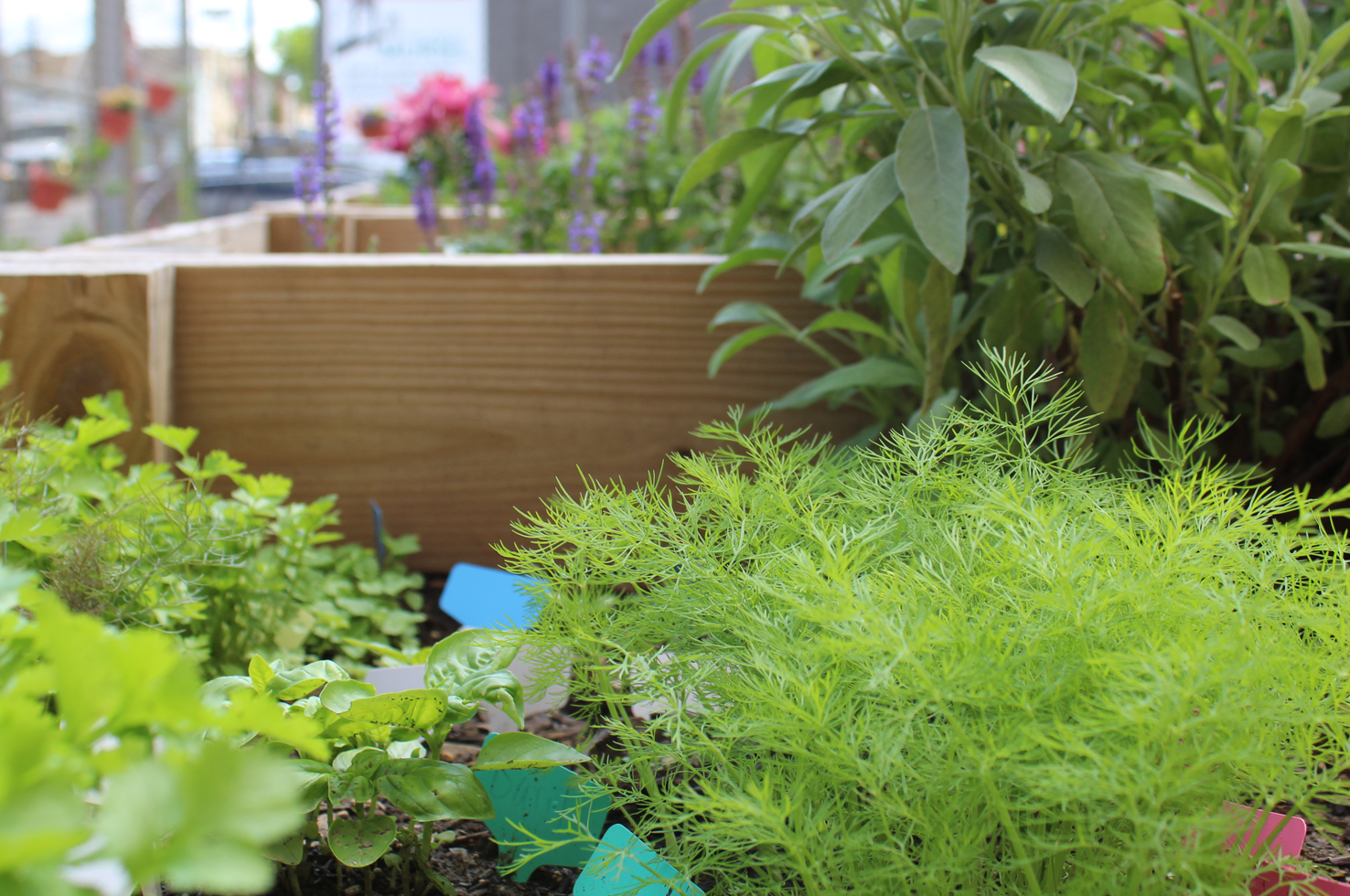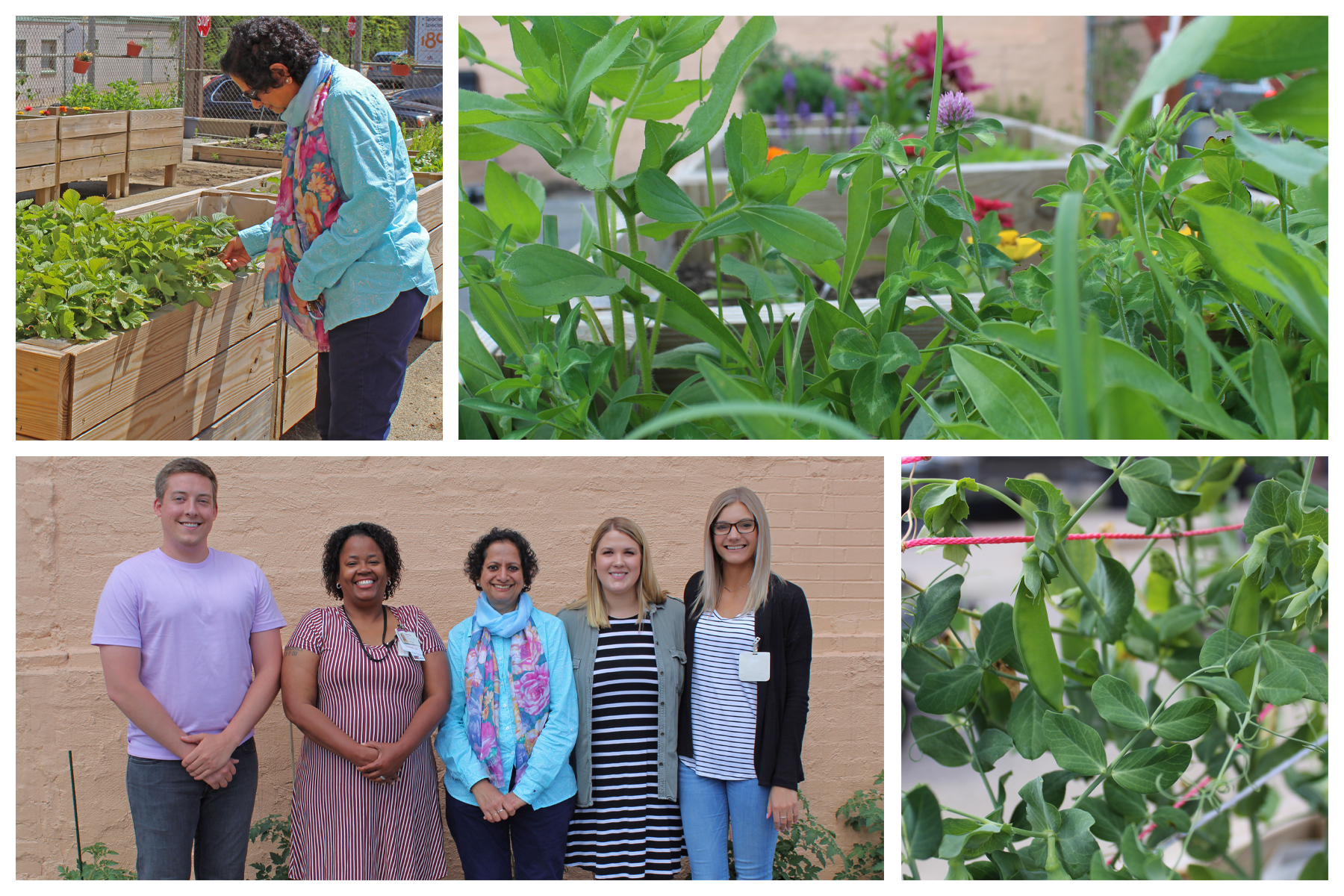The Mindfulness, Healing and Wellness Garden Helps Children and Adolescents Manage Emotions

Dr. Rameshwari V. Tumuluru, Associate Professor of Psychiatry, is Medical Director of the Adolescent Acute Partial Hospitalization Program (AAPHP) at UPMC Western Psychiatric Hospital (WPH), as well as the afterschool Intensive Outpatient Program (IOP). She has devoted her career to community-based care for children and adolescents.
In 2017, Dr. Tumuluru received a grant from The Beckwith Institute to create an on-site Mindfulness, Healing and Wellness Garden. The garden helps patients manage overwhelming emotions and behaviors through mindfulness, a core concept of Dialectical Behavior Therapy (DBT).
We spoke with Dr. Tumuluru about the Mindfulness, Healing and Wellness Garden, which is now in its second year.

How did the idea for this project originate?
In our program, we help kids between the ages of 12–18 who experience suicidal thoughts, self-harming behaviors, anxiety, depression, mood dysregulation, school avoidance and family disruptions, or who have experienced or been exposed to trauma, receive treatment similar in intensity to inpatient care, in a less restrictive, community-based setting. This allows patients to benefit from consistent treatment while maintaining their home and family life.
I thought about how we can teach kids mindfulness when they experience incessant chatter in their brains, racing thoughts and the distractions of the digital world. They often describe their struggle to stay in the present and how difficult it is to resist responding to their thoughts and emotions. I wondered how I could help them achieve calm. Also, although play is the work of childhood, some kids rarely play or spend time outside, often because of unsafe living situations or their digital life that keep them inside.
The garden is a way for kids to learn to play and interact with each other while working and spending time outside. One patient told me that she had never been to a garden or touched a plant before. It provides an experience that they wouldn’t normally have, a means to practice their therapeutic skills, and a chance to enjoy the calmness that a garden brings.
Please explain how the garden supports mindfulness.
We already teach mindfulness and grounding through DBT. Many overwhelming things can happen simultaneously for these kids: their thoughts race, emotions flare, they want to react. Mindfulness helps them be aware of their emotions without reacting. Grounding helps them stay in the moment. Additionally, self soothing is the use of the five senses to comfort and nurture oneself. We decided that a garden—with its sights, sounds and smells—would help teach these skills in a practical, experiential way. When they are busy in the garden, they are aware of their surroundings and emotions but they can stay calm. We tell the kids, “Hold something, stay grounded, take a minute.” When we’re in the garden, we don’t need to tell them to do that; it comes naturally.
Beyond mindfulness and grounding, how else is the garden incorporated into treatment?
It gives us an opportunity to teach them about food. Some of the medications we prescribe our patients cause severe weight gain, and they lose sight of how to eat well. With the garden, we can show them tomatoes, and how they grow. They can eat without judgment, which is helpful for the kids who have eating disorders. The experience also supports behavioral activation, increasing engagement in activities, as well as self-soothing. When they eat the strawberries from the garden it brings all these skills together to nurture them emotionally and nutritionally.
The garden is beneficial in other ways, too. In nature there is no perfection, so we can help them accept differences and decrease judgment of themselves and others. It is also a great therapeutic tool for teaching kids to interact and work collaboratively. It’s easier to engage them and talk about what’s going on, and they’re more likely to talk to each other, to share and learn from each other.
How do the kids participate in the garden?
Some of them helped with planting, and others water the plants and make observations. They can also plant seeds in a small pot, observe the growth and then take the plant home at the end of their treatment. Many kids also enjoy gardening and have discussed how they would like to build a garden at home or get a plant.
Does the Mindfulness, Healing and Wellness Garden support wider well-being at the AAPHP?
The garden supports overall well-being for the staff as well as for the patients. Weather permitting, they can have meetings or eat lunch and generally enjoy the space. The garden serves as wellness space for all.
Also, I don’t do this alone. The staff helped build the garden and are active in maintaining it. One of my research colleagues is an avid gardener and attends our regular meetings. She and others have helped a lot. This is a team and community effort.
What’s next?
I would like to write a manual for broader clinical implementation. There is a mindfulness awareness scale that we use at the beginning and end of treatment to gauge improvement in skill acquisition. Although it’s sometimes hard to measure, I’d like to show that the Mindfulness, Healing and Wellness Garden can help the kids stop their racing minds, thoughts and actions, calm down and stay in the moment, while also learning to interact with each other and nourish their bodies and minds.
Thank you for speaking with us, Dr. Tumuluru!

